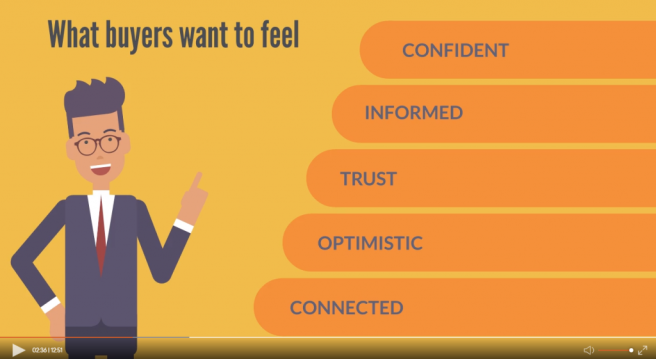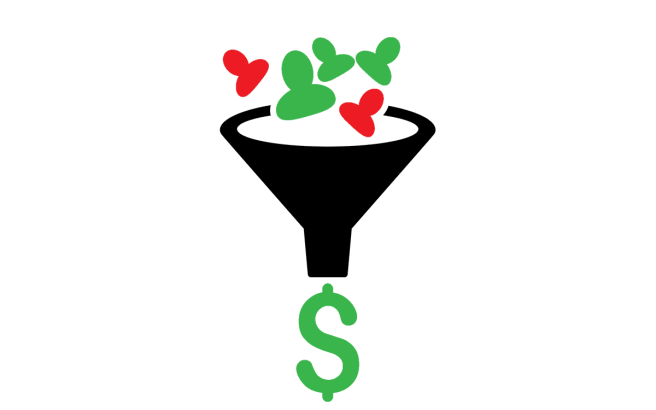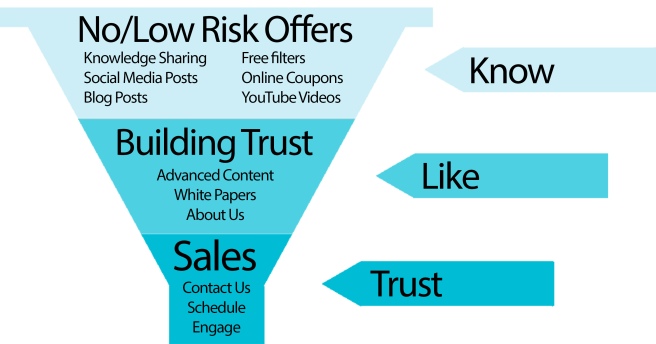How to sell in the digital era has become somewhat more complicated. So, salespeople and businesses need a different approach if they are to flourish in the new world or way of sales. Selling is all around us and buyers are being bombarded with emails, phone calls, social media messages, connection requests etc. How does a salesperson or business differentiate themselves in a noisy market?
With more access to information, the B2B buying process has become longer (an average of 4 months to close a new customer) and involves more decision makers (an average of 6.8 buyers). To effectively navigate the new buyer’s journey, sellers need to leverage digital platforms to find, engage and connect with the modern buyer.

Are you doomed to fail?
While many companies are figuring out how to sell in the digital era, many salespeople and organizations are struggling where to go next. Outdated sales techniques, internal politics, unclear sales strategies, lack of relevant sales training or sales coaching and inert sales cultures are hampering their ability to transform their bureaucracies. The companies that are no longer smart enough, fast enough, or innovative enough to survive will be swallowed up.
We know that the goal of any business is to generate profits that will lead them to success. In the modern sales process the way to do this is understand what level of interest the respective customer has that would trigger them even considering a purchasing journey. This explains why we need to understand, how to sell. It seems easy to say that selling involves establishing a connection with a buyer or the ability to create an interaction. Unfortunately, recent research proves that the sale has more chances of progressing when the buyer conducts or initiates the conversation.
The consequence of the digital era is that everything is connected. Which means that everything and everyone is networked. Once everything is networked, a lot of things happen. Everything goes faster and network dynamics come into play. Which brings you into the realm of adaptive selling systems. Salespeople need to be plugged in, content needs to be uniform across channels, multi-channel selling has to take priority, remote selling techniques need to be enhanced while AI and sales tools need to work in harmony with the actual selling activity (and not against it).
What You Need To Do.
Network
If your markets and by default your customers are turning into networks, your company and sales organization needs to turn into a network. The hierarchical network of the company structure and internal positions are the least important network. In a world of six degrees of separation, nobody cares about your title; they care about what you do, what you can offer them, how you can help them.
Vaccine Plan.
You need to apply Vaccine to your business and sales strategy.
Velocity – Velocity is the speed of something in a given direction. This is about how efficiently a business can reach its target audience, gather in leads, qualify those loads, convert leads, and create new sales opportunities.
Agility – Agility is how quickly and easily a business can move. The business can account for market changes and respond accordingly. It makes buying easier. Internal processes are streamlined and customer focused.
Creativity – Creativity is the ability for the business to produce great ideas. How they are different, demonstrate that differentiation and devising new ways to solve your customers problems. To bring a fresh way of engaging your customers in a way that’s meaningful for them.
Connections – Connections is about building networks of relationships, that the business is associated with phrases that customers value. The sales team is organized and can deliver personalized communications to a large network.
Innovation – Innovation involves bringing a fresh perspective to the business and its work methodologies. Rewrite the sales playbook and carve out a competitive advantage by delivering sales moments that matter. Train all the salespeople on digital interactions and virtual deal making methods.
Network – Build a virtual network of fans, customers, influencers, prospects, audiences, and customers. The business can plug into these networks to deliver messages, news and tap into the pulse of the market. Move closer to the customer base and be “always on”.
Experimentation – Experimentation in the business should uncover new opportunities using research and insights. No single person owns business experimentation, the business must involve anyone who touches a customer to experiment with ways that matches the overall strategic goal for the business.

The Salesperson and How To Sell.
In the era of remote, virtual, and digital selling, salespeople should understand the traits of the modern buyer.
The Buyer is digitally connected. The office is where the buyer makes it, they have multiple digital devices from a computer or laptop, smartphone etc. While this means there are many digital routes to connect to the buyer, the old way of selling has lost its voice. Salespeople need to be expert digital sellers and social media savvy.
The 24/7 Mobile attached buyer. How can salespeople build enough credibility and trust to interact on the buyers mobile? People check their phones over 100 times a day. Whether the customer is sitting in traffic, driving to work, or working from home, they will be constantly checking messages or emails on their mobile phones. How to sell I the digital era? well apart from email, social media messages, salespeople need to build closer relationships to their customers to be able to unlock mobile as a sales conversation channel.
Customers are socially engaged and savvy. From Twitter to Facebook, Instagram to LinkedIn, all your buyers and prospects are probably reachable on social media. However, social selling is a skill, an additive process to every sales strategy. Salespeople need to use content, provide neutral insights, build credibility, and establish a level of expertise if they are to reap the rewards of social media as an engagement channel.
The video age goes hand in hand with the digital age. Today, many C-level prefer watching videos and conducting sales meetings in video rather than in person or viewing static presentations. Salespeople need to get accustomed to using video in their sales tactics. While social media is great for promotional video the rise of personalized videos in email will have greater impact.
The Trends In How To Sell
The modern buyer is looking to connect with companies on a level that goes beyond a product or service. While they may be business driven, they are also more and more emotionally driven. They want to do business with companies that aim to improve not just their revenue streams but their business life.
Buyers are willing to network and engage with a responsible organizations. Communicating a genuine values and purpose will open up the opportunity for a business or salesperson to tell its story. The skill of storytelling about who you are, what you stand for, where you came from, what’s important to you, why it is important to the customer and the positive impact your business will make. How to sell in the digital era will have to include building a compelling narrative to share across the networks. One that features how a business operates, what it does differently, how it values and appreciates its customers and the approach it takes in being a responsible guardian to a customer’s trust.
As salespeople embrace the social channels and digital selling, a business will not only be able to humanize its brand but give customers and prospects a reason to listen and care about what the business is communicating. So, every business will need to provide multiple channels for questions, insights, buying or service inquiries. More than anything, one trend is that businesses must be accountable and open about how they operate.
How to sell in the digital era five principals:
Demonstrate you care about your place and your customers place in the market.
Meet your customers on their terms and only their terms.
Create differentiation and unique messaging that speaks to your audience.
Network, engage and educate with those seeking to do business with you.
Build long term relationships by creating loyal customers and not just clients.
Personalize the messages and solutions for each individual customer.
Wrap Up.
Every salesperson and business needs to have a hard look at themselves. How close are you to your customers? How strong are your shared values and culture? How customer focused are you really? How adaptable are you? Do you make good sustainable revenue or bad profit? Is your business ready for the digital era? Business and selling is not changing, it has changed, already happened. Now its up to every company to respond and start to move faster that what the market is telling it. Keep moving.
Source: How To Sell In The Digital Era – The Digital Sales Institute
















